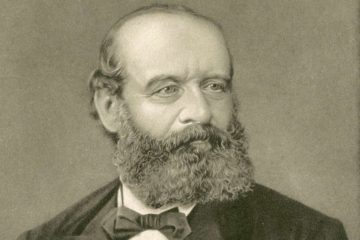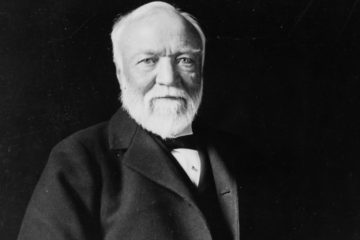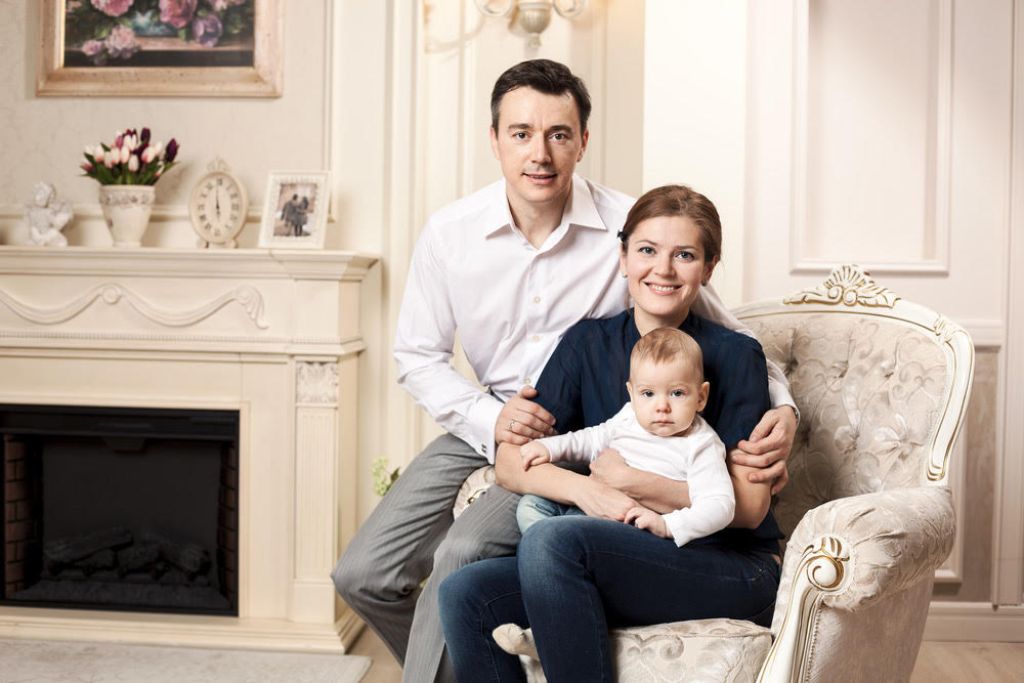
As of the time of writing, the world’s 15 richest families are worth a combined $1.622 trillion, that’s enough to make even the likes of Jeff Bezos blush! Combined, these families’ net worth is only slightly more than Canada’s!
In recent weeks, we have focused particularly on how you can build wealth. We’ve looked at the different ways to become a millionaire, and more recently, a billionaire…
To this end, we thought we’d look at the richest families in the world, to see if there’s anything they all share in common (besides their insanely large bank accounts!)
15. Johnson Family – $46 Billion
Kicking off this list of the richest families in the world is the Johnson family of Boston, Massachusetts. Unless you’re familiar with the financial services industry, you may never have heard of the Johnsons.
If you have, you’ll know that they are the owners of Fidelity Investments, the largest privately owned financial services company in the world!
Today, the Johnson’s can trace their money back to Edward C. John II. In 1946, Edward would found what he called Fidelity Management & Research, a small financial services company based in Boston.
Under his leadership, the company would expand enormously, before going international in 1969. In 1984, Edward C. John II would die from Alzheimer’s disease, leaving the family business to his son, Edward C. Johnson III.
Edward C. Johnson III, usually known as Ned Johnson, still owns and runs the business today, having expanded it massively during the latter part of the 20th century, especially with the help of investors like Peter Lynch.
Today, however, Ned Johnson is much more hands off. In his place, his daughter, Abigail, stepped in as president and CEO. Combined, Ned and Abigail own roughly 49% of the company, whilst the employees own the remaining 51%.
14. Porsche-Piëch Family – $53 Billion
Regardless of whether you’re a car person or not, you’ve more than likely heard of Porsche, one of the world’s pre-eminent luxury car brands. What you probably didn’t know, however, was that Porsche was much more than just a car…
Indeed, Porsche is actually a family!
Today’s Porsche family can trace their heritage back to Ferdinand Porsche, who established the Porsche car company in 1931, with the backing of car racer/financier Adolf Rosenberger and his cousin Anton Piëch.
Initially, the company didn’t make any cars under its own name, instead they designed and built cars for the German government, most notably the Volkswagen Beetle.
Following WWII, Ferdinand Porsche was arrested, and the company seized by the British. Over time, however, the Porsches, with the aid of their cousins, the Piëch family, managed to regain control of the company.
Over the next 30 years, the Porsche and Piëch families would slowly begin to form the modern-day Volkswagen Group, a company they were the direct and indirect owners of.
Although much of the family’s fortune is spread across almost 40 cousins, combined they own 50% of Porsche SE and 31.3% of Volkswagen (directly, not including the stake Porsche SE owns in Volkswagen).
13. Van Damme Family – $53 Billion
As of the time of writing, Anheuser-Busch InBev, more commonly known as AN InBev, is the world’s largest beverage company. As such, any owners of the company are undoubtedly rich…
Whilst there are a number of sub-branches of the family (such as the De Spoelberch and De Mevius families) who own large stakes in the present-day AB InBev, by far the largest owner of AB InBev is the Van Damme Family.
Since the 14th century, the Van Damme family has been one of the leading brewery dynasties in Europe. For over 700 years, the Van Damme family have producing beer that have been consumed across the continent.
Today’s Van Dammes are much more entrepreneurial than some of their predecessors have been. Over the last 50 years in particular, the Van Dammes have gone from having a few lines of beer, to literally hundreds!
For the last 50 years, the Van Dammes have bought out and merged with other breweries to form what is now AB InBev, which was merged together in 2008.
Whilst the family’s wealth is spread out between literally hundreds of members, when you add it all together, it totals an impressive $53 billion. Yet, no one member of the family is listed on the Forbes rich list…
12. Wertheimer Family – $54 Billion
Regardless of your background, chances are that you’ve heard of Chanel.
Whilst its name comes from famed fashion designer and co-founder, Coco Chanel, the majority owners of the company have almost always been the French-Jewish Wertheimer family.
In 1924, Coco Chanel was looking to expand her perfumes business. To do this, she needed financial backing, which she found in the form of Pierre Wertheimer, a wealthy French-Jewish financier.
With this backing, “Parfumes Channel” was officially born. The Wetheimers would own 70% (as they were financing the marketing, production and distributing) of Chanel, whilst Coco, herself, would own only 10%.
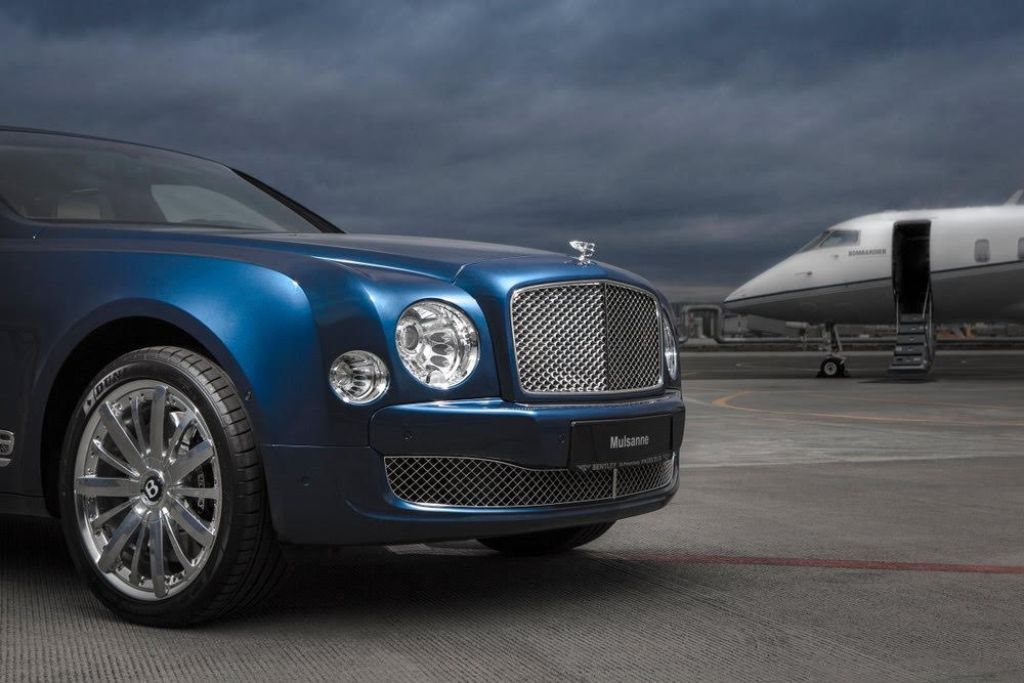
The remaining 20% would be owned by the department store owner who helped broker the deal between Wertheimer and Chanel.
Initially, the Wertheimers made a fortune from Parfumes Chanel. However, by the 1940’s the Nazis had taken control of France, where, as Jews the Wertheimers should have lost control of Chanel.
Unlike other Jewish businessmen, the Wertheimers fled to America, with them drawing up an agreement with a non-Jewish, French businessman, to own the company until the Nazis were defeated by the Allies.
Following the Nazi’s defeat in 1945, the Wertheimers would once again own Chanel. Today, over 75 years later, the modern-day Wertheimers continue to have a controlling interest in Chanel, worth a combined $54 billion!
11. Hermès-Dumas Family – $64 Billion
Today, the name Hermès is synonymous with luxury goods. Whilst in the past, Hermès products were worn by the nobles of Europe, today, they’re worn by the new-nobility: celebrities.
Despite the company being almost 200 years old, the Hermès still owns the family business.
Today’s Hermès family can trace their lineage back to German-born, French fashion designer, Thierry Hermès. In 1837, Hermès noticed that the nobility loved riding, yet seemed to be paying for poor-quality, yet expensive saddles.
Knowing he could make a better product, Thierry Hermès incorporated what would eventually the Hermès fashion house. Within only a few years, much of Europe’s nobility were frequenting his store, in search of his hand-made saddles.
Over time, Hermès expanded beyond horse saddles, eventually expanding into producing high-end clothing, such as scarfs, perfumes and neckties, among many other items.
Even after the death of Thierry Hermès in 1878, the Hermès family has continued to stay active in the day-to-day operations of the company. Over time, the Hermès family have also married into the Dumas family as well.
Unlike many other traditional fashion houses, Hermès has embraced new technologies at the behest of the Hermès-Dumas family, such as producing its own brand of even more luxurious Apple Watches, which sell for as much as $2,000 a piece!
10. Bettencourt Family – $73 Billion
The Bettencourt family are one of those strange families. On paper, the family is from old money, having once been an important noble house in Normandy, during the Middle Ages.
However, the money they have today, hasn’t been passed down through the ages, having been amassed by some long since dead ancestor. As with the other families on this list, they got their through being savvy entrepreneurs!
In 1907, French chemist Eugène Schueller discovered an innovative hair-color formula, which he called Oréale. Seeing a huge potential for profit, Schueller began to mass-produce Oréale and sell it to Parisian hairdressers.
Two years later, Schueller would formally incorporate what would eventually become L’Oréal. Over the next 45 years, Schueller would lead the company to develop much of its present line of products.
In 1957, Schueller would die, leaving his entire fortune to his daughter Lillian, who had married André Bettencourt seven years prior. For the next 60 years, Liliane would expand and consolidate L’Oréal into what it is today.
Upon her own death in 2017, Liliane would leave her fortune to her own daughter, Françoise Bettencourt Meyers, who has led the company since then. She currently owns 33.31% of the company her grandfather founded.
9. Ortega Family – $75 Billion
As with many of the richest families on this list, you’ve probably never heard of the Ortega family. Whilst you’ve never heard of them, you’ve probably heard of some of their companies, namely, ZARA.
Today, the Ortega’s wealth can be traced back to Amancio Ortega, and his then-wife, Rosalía Mera. In 1975, the couple open a clothing store they called ZARA, in their hometown of A Coruña, Spain.
Over the next ten years, ZARA would go from a single store in A Coruña to Spain’s largest clothing retailer. As the owners of Spain’s largest clothing retailer, the Ortegas were able to purchase a number of big-name brands.
Among these big-name brands would be the likes of: Bershka, Massimo Dutti, Oysho, Pull & Bear, Stradivarius and Uterque, all of which would be rolled into Inditex, which the Ortegas would be the owners of.
Prior to 2001, the Ortega family’s net worth was estimated at only a few hundred million. However, in 2001, Inditex would have an Initial Public Offering (IPO), which saw the Ortega’s net worth increase considerably.
Despite Amancio Ortega and Rosalía Mera getting divorced in 1986, the couple did have two children. Following Rosalía Mera’s death in 2013, the couple’s daughter, Sandra, inherited her mother’s stake in the company.
Combined with her father’s, the father-daughter duo own almost 75% of Inditex’s stock!
8. Slim Family – $80 Billion
If you know anything about the Slim family, you’ll know that they own literally everything. If it makes money, and is a good enough deal, you can bet that the Slim family will at least try to buy it!
Originally making his money as stock trader, Slim family patriarch, Carlos Slim, soon amassed a small fortune. Using this fortune, Slim soon branched out into soft drinks, before expanding into other industries like hotels and tobacco.
As time has progressed, Slim has been in pretty much every market that’s profitable (and undoubtedly a few that aren’t). Not only has this earned him billions of dollars along the way, but also a reputation for being a particularly savvy businessman!
Today, Slim has divested himself of a large portion of his earlier business ventures. Those he hasn’t divested himself from, he’s merged into his present holding company, Grupo Carso, of which he is the majority owner of.
Slim has also kept a few businesses separate from Grupo Carso, mostly his telecommunications businesses, as he owns all of Mexico’s major telecommunications providers.
Over the last 20 years or so, Slim’s eldest son, Carlos Slim Domit, has become active in his father’s business. Much like his father, Slim Domit also owns a large portion of his father’s company too!
7. Ambani Family – $81 Billion
Recent years have seen the Ambani family make headlines on a number of occasions, most notably for the family’s current head, Mukesh Ambani’s, $1 billion house!
Today, the Ambani family is best known for its control of India’s Reliance Industries, a company founded by the Ambani family patriarch, Dhirubhai Ambani, in 1957.
Initially an oil refinery, Dhirubhai Ambani expanded Reliance Industries into a number of other sectors, including oil, gas, petrochemicals and textiles. Upon his death in 2002, his stake in Reliance Industries passed to his son, Mukesh.
Under his leadership, Reliance Industries has strengthened its market share in these industries, to the point where, today, Reliance Industries is the leading Asian company in these industries!
Beyond this, Mukesh also has a younger brother, Anil. Like his brother, Anil is also a businessman, who similarly works for Reliance Industries, in particular, retail and telecommunications divisions, which he has grown exponentially.
Due to their holdings in Reliance Industries, and its associated companies, the Ambani family have a combined net worth of $81 billion, narrowly beating the aforementioned Slim family.
6. Al Saud Family – $95 Billion
Today, the Al Saud family are famous for being the monarchs of Saudi Arabia. Whilst their lineage stretches back several millennia, the modern iteration of the family can trace their lineage back to 1744 and the First Saudi State.
Here, their oldest ancestor, Mani’ ibn Rabiah Al-Muraydi was able to maneuver his way from being the chief of a small tribe, to establishing parts of what would become modern-day Saudi Arabia.
Over the next 165 years, the First Saudi State would crumble and be replaced by the Second Saudi State, also controlled by the Al Saud family. By 1900, the Second Saudi State had similarly collapsed.
In 1912, then-head of the Al Saud family, Ibn Saud, was able to conquer and maneuver his way to establishing what we now call Saudi Arabia. As the country’s founder, Ibn Saud had himself crowned King of Saudi Arabia.
Today, Ibn Saud’s 25th son, Salman, is the present king. Over the last 110 years or so, the Al Saud family’s net worth has increased exponentially, in no small part, thanks to Saudi Arabia’s abundance of oil and natural gases.
Beyond just being the royal family of Saudi Arabia, several members of the family have become quite successful investors and/or collectors, which has helped to bolster the family’s net worth considerably.
5. Koch Family – $110 Billion
In recent years, the Koch family have made headlines several times, mostly for their campaign contributions. Whilst this may be what many know them for, they were originally known for their business acumen.
During the 1920’s and 1930’s, Koch family patriarch, Fred Koch, made a fortune in the oil industry. As the owner of several engineering firms, Fred was instrumental in establishing oil refineries across Europe, the Middle East and Asia.
By 1940, Fred had sold his interests in these companies, pooling all of his money to establish Koch Industries, initially as an oil refining company. For the next twenty years, Fred Koch would expand the business beyond oil…
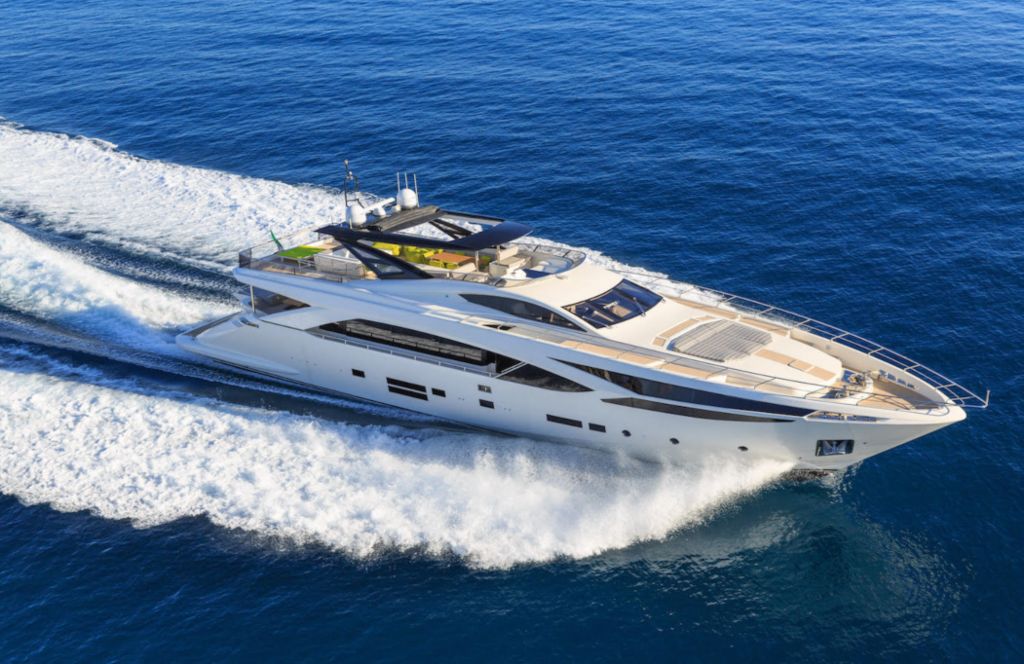
However, Fred would die in 1967, with his ownership in the company being split between his four sons. Over time, Fred’s sons, Charles and David, have emerged as the majority owners of the company.
Under the leadership of Charles and David (until the latter’s death in 2019), the company has grown into the second-largest privately held company in the US, with the family itself worth approximately $110 billion!
Beyond just the family’s holdings in Koch Industries, several members of the family are passionate art collectors, with the family having amassed a sizable fortune in art.
4. Mars Family – $120 Billion
Regardless of whether you’ve eaten one or not, we’ve probably all heard of the Mars bar. What you probably didn’t realize though, was that the Mars bar was just one food item in a confectionary empire!
This confectionary empire is Mars, Incorporated. one of the largest food companies on the planet. Whilst most other food companies are publicly traded, Mars, Inc. is not, instead, it’s wholly owned by the Mars family.
Today’s Mars family can trace their heritage back to Franklin C. Mars, who established Mars, Incorporated. in 1920, on the back of a failed wholesale candy business.
Under Franklin’s leadership, the company developed treats such as the Snickers Bar and Milky Way. Following Franklin’s death in 1934, his son Forrest would take over the family business.
Here, he would develop more of the company’s famous treats, such as the M&Ms and Mars bar. Under Forrest’s leadership Mars, Incorporated. went from a minor candy producer to the largest candy producer in the country.
Upon Forrest’s death in 1999, his stake in Mars was split equally between his three children. Whilst two of his children are still alive, one died in 2016, dividing his respective fortune between his own four children.
3. Arnault Family – $143 Billion
As with many other families on this list, you’ve probably never heard of the Arnault family. And that’s the way they like it. Whilst many of the other richest families in the world bask in media attention, the Arnaults shy away from it…
As such, they’re renowned in many business circles for their ability to control a well-known, and often media-oriented industry, whilst staying out of the lime light that their brands enjoy.
In 1971, Arnault family patriarch, Bernard Arnault, began working for his father’s engineering company. Thirteen years later, Bernard had grown the business massively, where it was acquired by another company for millions of dollars.
Using this money, Arnault would acquire French luxury brand Financière Agache. From here, Arnault would then acquire Boussac Saint-Frères, the parent company of luxury brands Dior and Le Bon Marché among others.
Over the next four years, Aranault would sell all the brands, except Dior and Le Bon Marché. Using this as leverage, Arnault would establish LVMH, after acquiring brands like Louis Vuitton and Moët Hennessy.
Today, Arnault remains at the helm of LVMH, owning roughly 43.5% of the company. Over the last decade, several of Arnault’s children have gotten involved with LVMH, with them also owning varying percentages of the business.
2. Walton Family – $250 Billion
Regardless of whether you’re American or not, you’ve probably heard of Walmart. Whilst they’re most famous for their Walmart brand of stores in the US, the company also owns a number of supermarkets in other countries too…
Although the company is currently listed on the New York Stock Exchange, the principle owners of the company are the Walton family, descended from Walmart’s founder, Sam Walton.
In July 1962, veteran retailer Sam Walton opened a general supermarket, which he called Wal-Mart Discount City. Over the next 30 years, Sam Walton would grow Wal-Mart (later just Walmart) into the largest private employer in the world!
Upon his death in 1992, Sam Walton’s four children would inherit an equal stake in the company. 30 years later, and the family still own a controlling 51% in the company collectively.
Over the last 15 years or so, two of Sam’s children have died, leaving their respective stakes in the company to their own children, many of whom sit on Walmart’s board of directors.
Although their wealth is divided between seven members of the Walton family, combined the entire family’s net worth is currently estimated at $250 billion, almost entirely derived from their stake in Walmart.
1. Rothschild Family – $350 Billion
Initially, I was opposed to adding the Rothschild family to this list. After all, for the last 50 years or so, the family has spent much of its time concealing its wealth through a myriad of shell companies based all over the world.
As such, nobody really has any idea about how rich they are. The lowest estimates say that they’re worth $400 billion, whilst the highest estimates are well in to the trillions!
Today’s Rothschild family can trace their heritage back to Mayer Amschel Rothschild, a wealthy German Jewish banker, who lived in Frankfurt from the mid-18th century until the early 19th century.
Here, he established Rothschild & Co. which managed much of the King of Hesse’s personal fortune.
Mayer would have a total of five sons, with his wife. Each of his sons would be based in one of the five major European capitals: London, Paris, Naples, Frankfurt and Vienna, thus expanding the bank internationally.
For the next two centuries, the Rothschild banking family has financed almost every major deal or war done in Europe!
Although the last 100 years have seen a lot of the Rothschild banking empire be pulled down, more of it remains than you’d think. As such, the Rothschild’s wealth is estimated at $350 billion, spread around hundreds of Rothschild members…
Which of the richest families do you think your family will emulate? Tell me in the comments!
